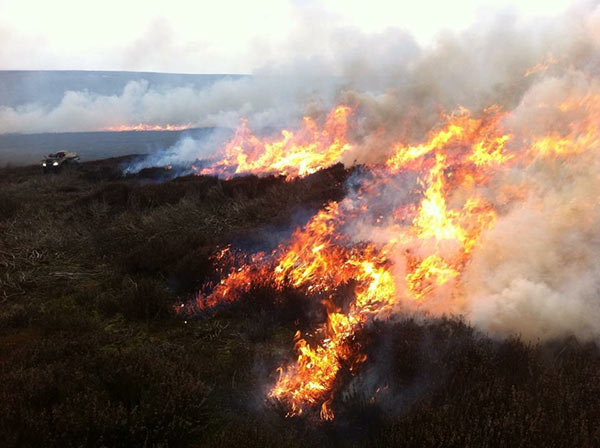Heather Burning
Heather Burning is a strange concept to the average person. Find out why it is so important to our uplands
Heather Burning is a strange concept to the average person. The purpose being to set on fire an area of combustible fuel in order to benefit the overall health of the moorland environment. However, heather burning is far more important and effective than one might think.
Heather is the staple diet for Red Grouse and on moorland, for hill sheep and they need a lot of it to thrive in an environment which can be very unforgiving. The heather is at its most nutritious to Grouse and sheep whilst it is young. Therefore, it is vital, so as to have enough food to properly manage it. Old and ‘leggy’ heather is of no nutritional value to either Grouse or Sheep.
Burning sounds very intrusive and although it has the potential to be harmful if not done properly, when done by professional Game keepers, it provides an essential service for the moor and massively contributes to the all-around health and well-being of those that live on and eat it. Heather Burning is not just done for the benefit of Grouse and sheep.It is also necessary to help prevent fires, which were much in the news last spring, when the Staley bridge moorland fire burnt for days and people had to be evacuated from their homes.The prevention of wildfires seems an unlikely benefit for starting a fire. However, the key difference is controlled heather burning removes the highly combustible fuel load, which is the catalyst for an out of control moorland blaze. Burning a series of fire breaks, will help limit the spread of wildfire.
Other moorland birds such as Curlews and Golden Plover benefit from burning because it creates a varied landscape for them to live in while also offering protection from predators. It is this variation in habitat that serves not only Grouse but so many at-risk bird species.
Burning in the UK is only permitted during a ‘season’. The dates for this are the 1st of October through to the 15th of April. Having the burning season over the winter means that there are few days in which keepers can actually go burning. However, having it over the winter months also reduces the chance of a fire getting out of control. Keepers are equipped with specialist equipment to both start and extinguish fires, which include a specialist fogging unit (a mini fire engine!), tractors with swipes to cut around the area to be burnt, paraffin torches for ignition and specialist fire resistant clothing for safety of the operator. It is vital keepers work in a team when burning, so they are constantly aware of where the fire is and they can react should for example, the wind direction changes.
Burning is essential for sustainable moorland management and has been practiced for hundreds of years. It remains to be seen whether Natural England’s current fixation on no burning over deep peat and possible replacement by cutting, will have their desired effect, or whether in 20 or 30 years’ time, we look back in amazement of what the consequences have been.


